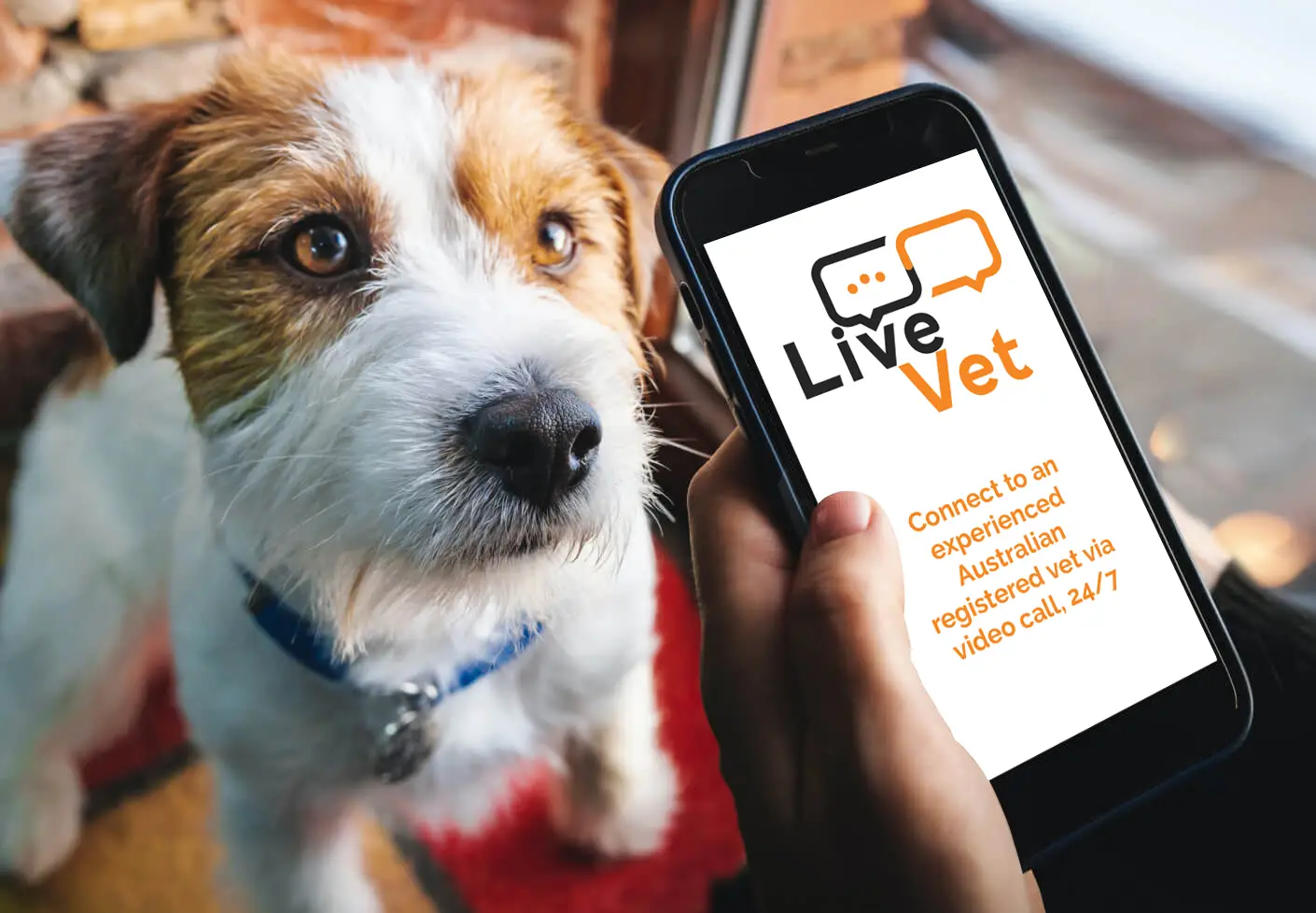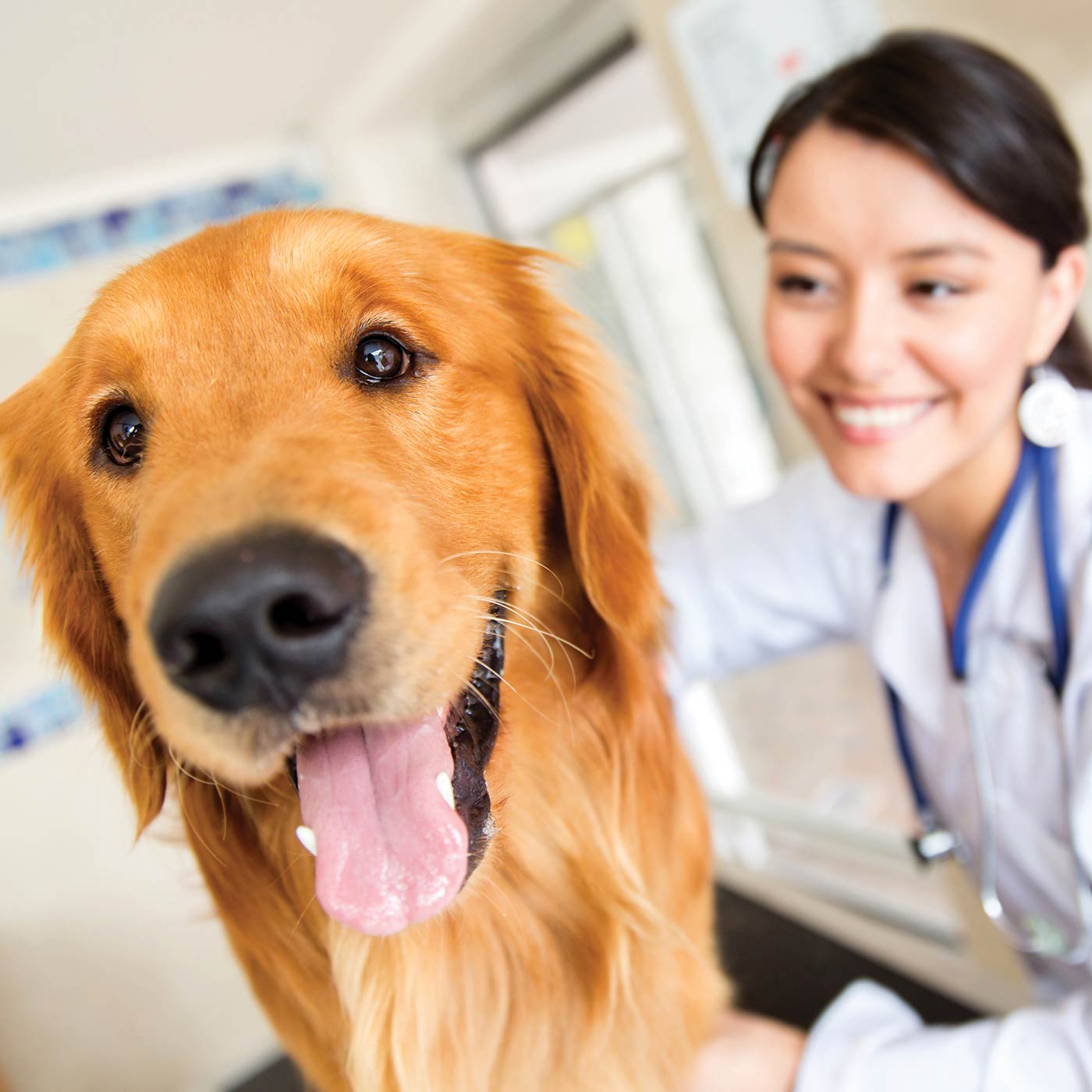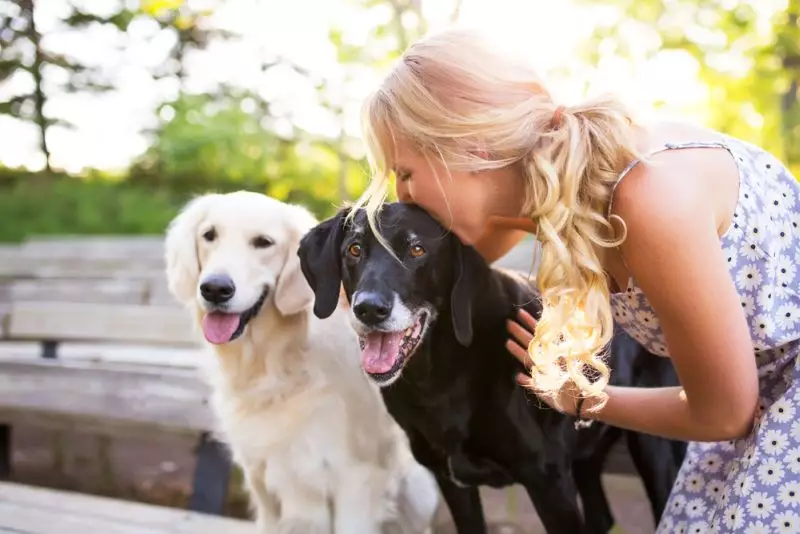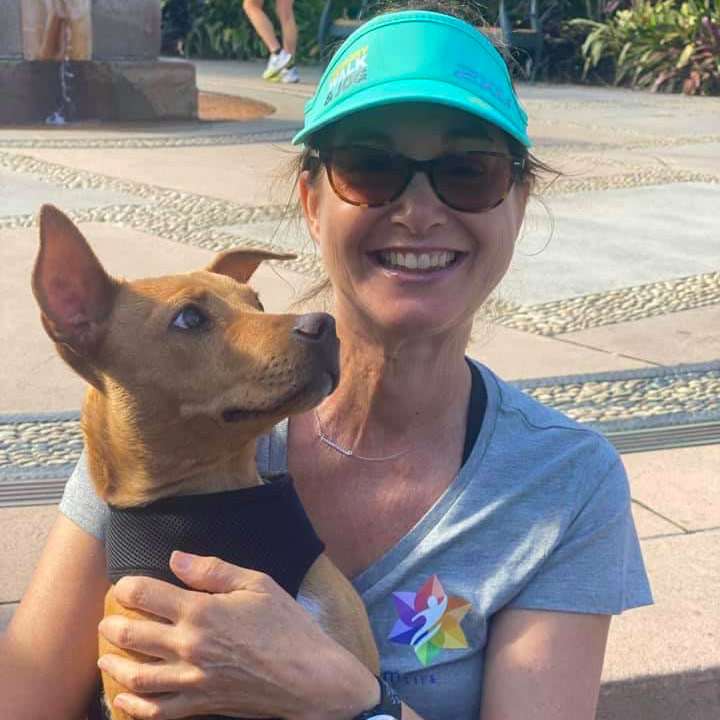Understanding your dog’s behaviour: Decoding dog-speak
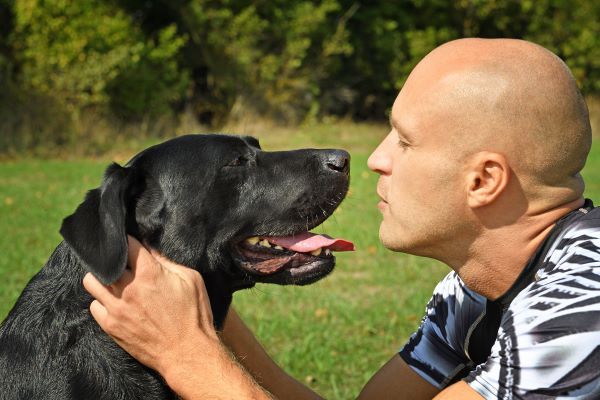
If you live with a dog, you already know they’re wonderfully expressive. From the tilt of their head and the wag of their tail to the look in their eyes when you reach for the lead, your dog is constantly communicating their feelings, needs and intentions.
 Dogs “speak” to us all the time, just not in words. Learning to understand their body language not only strengthens your bond, it also helps prevent misunderstandings and behaviour problems.
Dogs “speak” to us all the time, just not in words. Learning to understand their body language not only strengthens your bond, it also helps prevent misunderstandings and behaviour problems.
Think of it like learning a new language — one made up of ear flicks, tail swishes and subtle facial cues. Once you start paying attention, you’ll realise your dog has a lot to say!
1. Talking with their mouths
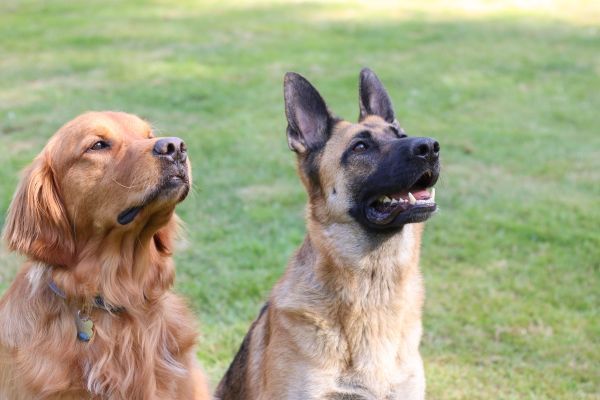
Dogs may not use words, but their mouths can tell you plenty.
-
Relaxed and happy: A calm, content dog usually has a soft mouth that’s closed or slightly open, sometimes with the tongue gently lolling out.
-
Anxious or submissive: A nervous dog may keep their mouth closed tightly, sometimes with the corners turned down or pulled back in what looks like a tense “grin.”
-
Panting: Most panting is simply a way to cool down after exercise or on a warm day — but excessive panting when it’s not hot could mean your dog is stressed, excited or in pain.
-
Aggressive or fearful: A dog that shows its teeth, wrinkles its nose or curls its lips is giving a clear warning: “Back off.” Never punish this behaviour — it’s communication. Instead, give your dog space and try to understand what’s making them uncomfortable.
Tip: If your dog’s mouth suddenly looks tense when greeting another dog or person, that’s your cue to slow things down.
2. What that tail is really saying
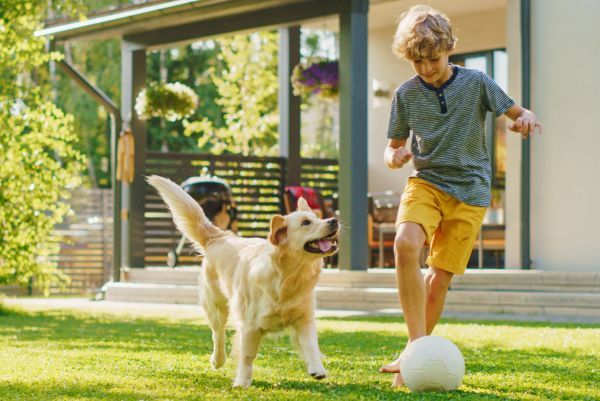
We often think a wagging tail means a happy dog, but it’s not always that simple.
-
Loose, sweeping wags: Usually signal friendliness, excitement or happiness.
-
Slow, gentle wag: A calm and relaxed dog.
-
Stiff, high wag or rigid side-to-side motion: A sign of alertness or possible tension. The dog is focused — maybe on a strange sound, smell or another animal.
-
Tail tucked between the legs: Fear, anxiety or submission.
-
Tail held high and still: Confidence or dominance — sometimes bordering on challenge, depending on the context.
Remember, every dog is different. Breeds with curled or short tails (like Pugs or French Bulldogs) may show emotion more subtly, so pay attention to their whole body for clues.
3. Ears aren’t just for listening
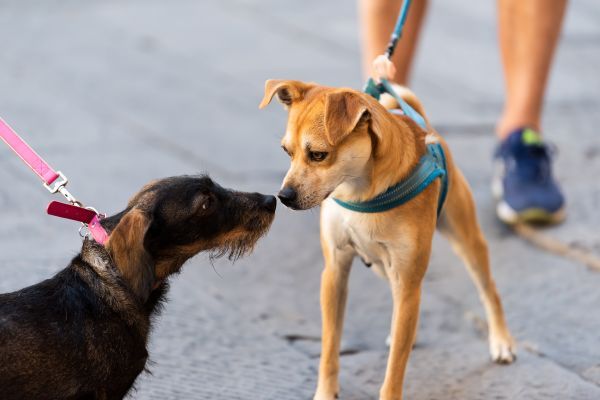
Ears are like mood antennas that can send us a clear signal of how your dog is feeling.
-
Neutral ears: Relaxed and comfortable.
-
Forward and erect: Curious, confident or alert.
-
Flattened back: Fearful, submissive or anxious.
-
One ear up, one down: Often just listening closely or unsure how to feel — adorable, too!
Dogs with floppy ears can be trickier to read, but you’ll still notice subtle movements at the base of the ear or slight changes in their position when emotions shift.
4. Body posture speaks volumes

You can tell a great deal about what your dog is feeling or thinking by how they hold themselves.
-
Confident or dominant: Standing tall, tail high, ears forward, sometimes making themselves look larger. You might see this when meeting new dogs or during play.
-
Relaxed and friendly: Loose muscles, wiggly movements, soft eyes . Your dog is comfortable and open to interaction.
-
Submissive or frightened: Crouching low, tail tucked, ears back, avoiding eye contact. This posture says “I mean no harm.”
-
Play bow: Front legs stretched forward, rear end in the air, tail wagging. The universal doggy invitation to play!
-
Freeze or stiff posture: Often a red flag that your dog feels threatened or overwhelmed. If you notice this, give them space or remove them from the situation.
5. Putting it all together
 Understanding canine communication isn’t about interpreting one signal — it’s about reading the whole picture. A wagging tail might mean joy in one moment and tension in another. Context, environment, and the rest of the dog’s body cues matter just as much.
Understanding canine communication isn’t about interpreting one signal — it’s about reading the whole picture. A wagging tail might mean joy in one moment and tension in another. Context, environment, and the rest of the dog’s body cues matter just as much.
As you become more aware of “dog-speak”, you’ll start recognising your dog’s unique ways of saying things like:
-
“I’m ready to play!”
-
“Please give me space.”
-
“I’m nervous about that noise.”
-
“You’re home — my favourite person!”
Tip: Look at your dog’s whole body, not just one signal — context is key!
Signs your dog might be stressed or overwhelmed
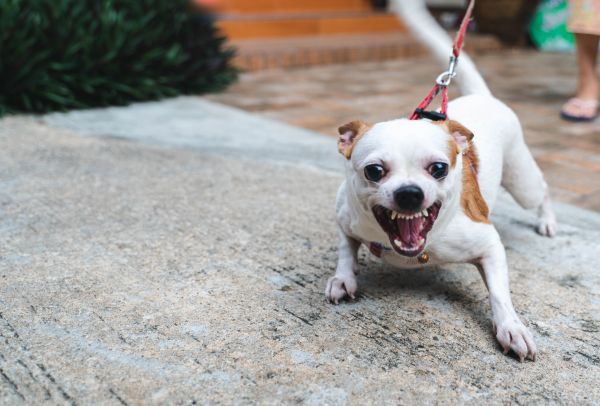
Even the friendliest dogs can feel anxious in certain situations. Watch for these subtle cues:
-
Repeated yawning or excessive licking (not related to food)
-
Avoiding eye contact or turning away
-
Shaking off when not wet (as if drying off after a bath)
-
Trembling or crouching low to the ground
-
Tail tucked tightly under the body
-
Refusing treats or play they’d normally enjoy
-
Whining, pacing, or panting when it’s not hot
If you spot these signs, calmly remove your dog from the situation and give them time to relax. Consistent stress may warrant a chat with your vet or a qualified behaviourist.
Why it matters
Observing your dog’s body language and learning to interpret “dog speak” strengthens your bond and makes everyday life smoother — from socialising at the park to visits to the vet. It can also help prevent bites and reduce anxiety, since you’ll be better able to recognise early signs of stress or discomfort.
So next time your dog gives you that look or does a curious tail flick, take a moment to observe and respond. It’s your dog’s way of saying, “Hey, are you listening?
Bow Wow Meow Pet Insurance can help protect you and your dog should an unexpected trip to the vet occur.
-
Find out more about our dog insurance options
-
Get an online pet insurance quote
Bow Wow Meow is proud to have been awarded winner of Canstar’s ‘Most Satisfied Customers’ Award in the Pet Insurance category for both 2024 and 2025!
Bow Wow Meow is proud to have been chosen as Product Review’s Pet Insurance Award Winner every year from 2018 to 2025! This is based on 2,995 independent customer reviews (as at 21/01/2025), with an overall rating of 4.3*
Google Review rating = 4.5* (based on 968 reviews)
Trust Pilot rating = 4.6* (based on 531 reviews)
Bow Wow Meow is proud to have been chosen as Product Review’s Pet Insurance Award Winner every year from 2018 to 2025! This is based on 2,995 independent customer reviews (as at 21/01/2025), with an overall rating of 4.3*
Google Review rating = 4.5* (based on 968 reviews)
Trust Pilot rating = 4.6* (based on 531 reviews)
Bow Wow Meow has been chosen as a winner in the Finder Pet Insurance Awards 2024. Finder’s panel of experts analysed over 140 quotes to award our Ultimate Care Plan the winner of the “Pet Insurance – Value” category.

